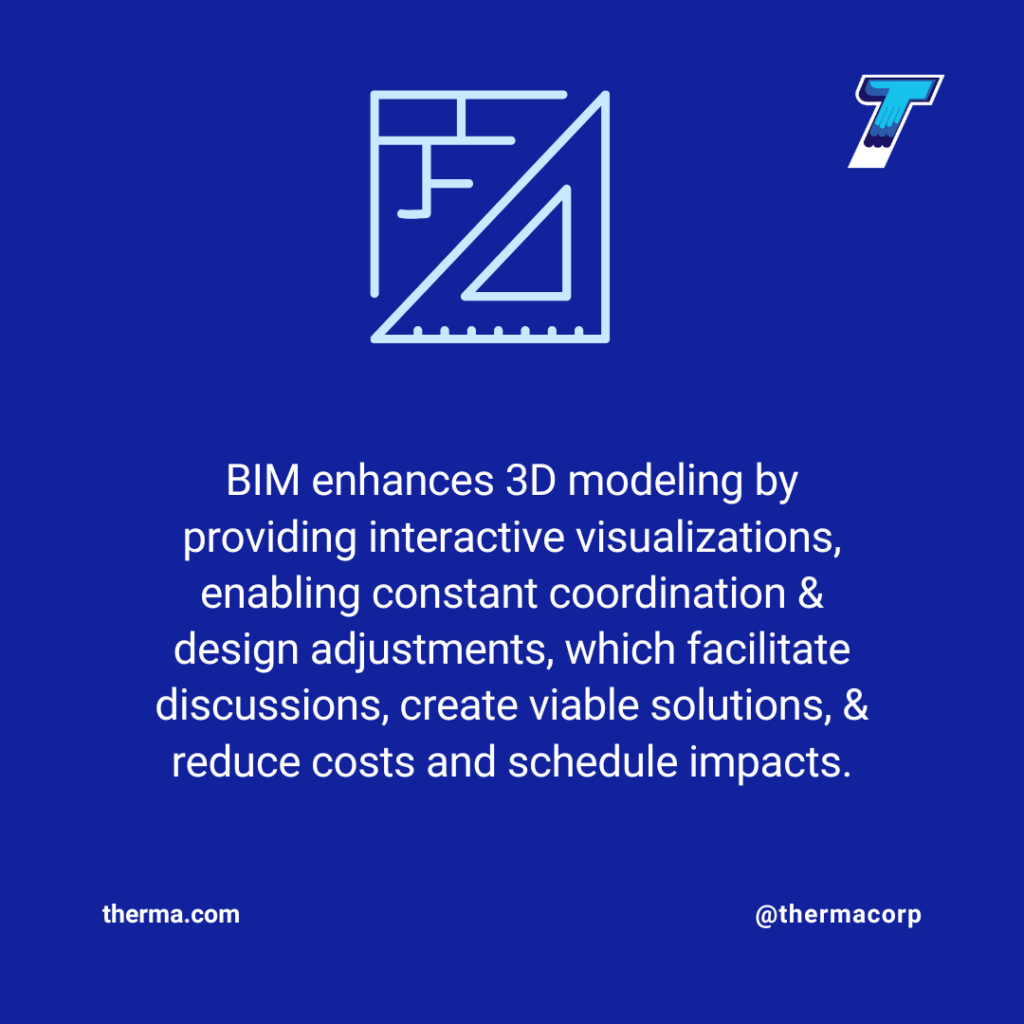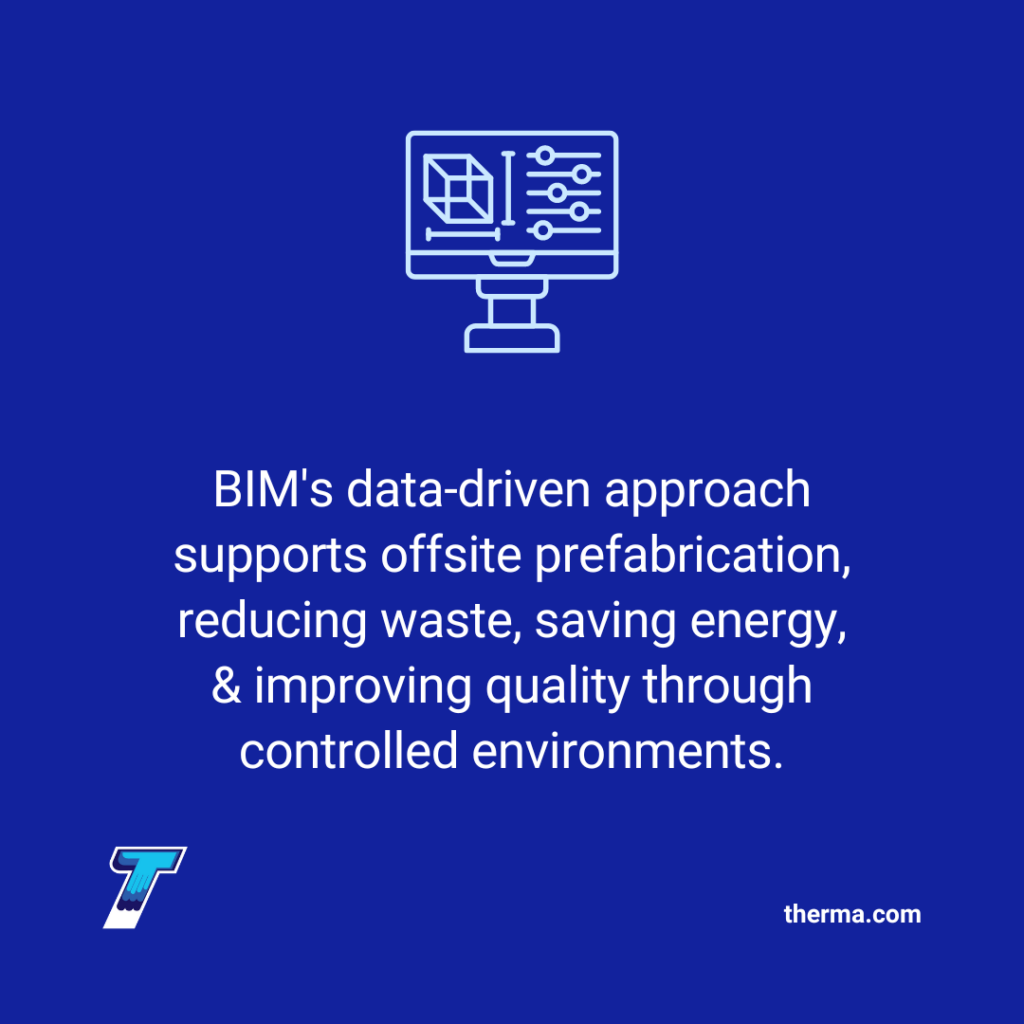by Ali Kriscenski
Building Information Modeling (BIM) technology is an exciting tool that can be utilized in construction projects from the ground up to additions and renovations. BIM technology uses specialized software to visualize building assets and inform construction strategies. In this article, we’ll explore what BIM offers and how it can serve your facility improvements.
What is BIM?
The idea of BIM began in the mid-1970s and started to contribute to processes in the A/E/C industry throughout the 1980s. The current understanding of what BIM encompasses has been consistent since the early 2000s and its practices have become standardized through ISO (International Organization for Standardization).
BIM technology is a collaborative platform that allows cross-disciplinary input from architects, engineers, and construction professionals. The 3D model created in BIM software creates advanced design planning. By utilizing BIM, design teams can make data-driven decisions throughout planning, design, and construction.
BIM Applications
BIM has a wide variety of uses from initial design presentation, design coordination, prefabrication, and sustainability. BIM can contribute to sales, estimating, design, and construction processes creating opportunities to find cost savings and increase the value of services.

Using BIM in 3D Modeling
BIM can be an effective tool to help visualize designs for clients. Traditional plans or CAD (computer-aided design) have been standard, but BIM offers a more robust and interactive presentation. BIM software updates the design as elements are adjusted. This allows constant coordination which can facilitate design discussions, create viable solutions, and ultimately reduce cost and schedule impacts.
BIM for Design Coordination
BIM technology’s ability to update building models makes it a useful tool in design coordination. BIM can help visualize changes that could affect a building’s aesthetics or systems. For example, BIM could indicate if moving a wall would impact lighting design. It can also help streamline decisions as a platform that can show virtual mock-ups of finishes or other selections.
BIM can also help with system design, and provide a collaborative virtual space to coordinate with different trades. Using BIM as the database, plumbing, HVAC, electrical, structural, and any additional trades can work together to lay out different building elements and avoid conflicts.
BIM in Prefabrication
The data-driven aspect of BIM makes offsite construction feasible. With reliable data, BIM software can help guide the prefabrication of electrical, plumbing, or HVAC components. It can be used for the construction of prefabricated buildings. This capacity allows construction processes to start offsite and ahead of actual construction. Prefabrication of components or buildings reduces waste, saves energy, and improves quality as prefab occurs in more controlled environments.

BIM’s Role in Sustainability
The earlier design teams collaborate with construction teams the better the outcome. This holds true with projects aimed at high-performance sustainability goals where even subtle design changes can impact energy efficiency. BIM is a way for design and construction teams to craft the elements of a high-performance building early in the design process.
Benefits of BIM
The increased capacity for collaboration is a top benefit of using BIM. Coordination between design disciplines, construction, and engineering partners, as well as between various trades helps move teams to construction and reduce onsite issues.
The ability to proactively identify and eliminate design issues before construction is an effective cost-control method. BIM allows teams to understand construction sequences and reduce costly delays.
As BIM technology facilitates 3D simulations of design options, it can be a testing ground for ideas before investment. BIM can help identify value engineering scenarios that can impact not only construction costs but also long-term operational costs. In this way, BIM contributes to efficiencies that affect buildings long beyond the construction phase.
Engaging BIM Technology
When contemplating a construction project, consider how BIM technology can contribute a lot of benefits. From stakeholder buy-in to energy efficiency, BIM can have a positive impact on all phases. Finding partners who can facilitate BIM options and participate in a collaborative platform will increase your project’s likelihood of a successful outcome. The experts at Therma can help get your project on track with BIM. Contact Therma today.
AUTHOR BIO
Ali Kriscenski was trained in high-performance building design at Boston Architectural College. She has worked with leading architecture and construction firms in NYC and New England and served on the executive team at the Forest Stewardship Council International. She was the managing editor at Inhabitat and has worked pro bono for the Green Building Institute, ISEAL Alliance, and Habitat for Humanity.
Sources
BIMAlly – Most Important Trends in the World of BIM 2023
Medium – Top BIM Trends Shaping the Construction Industry in 2024







